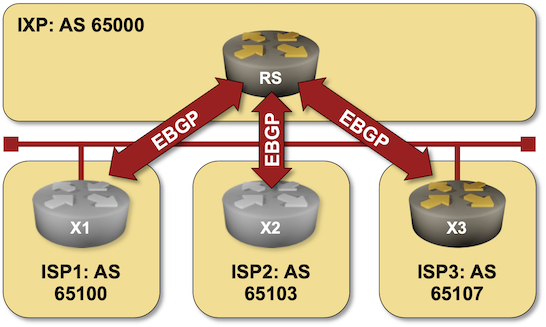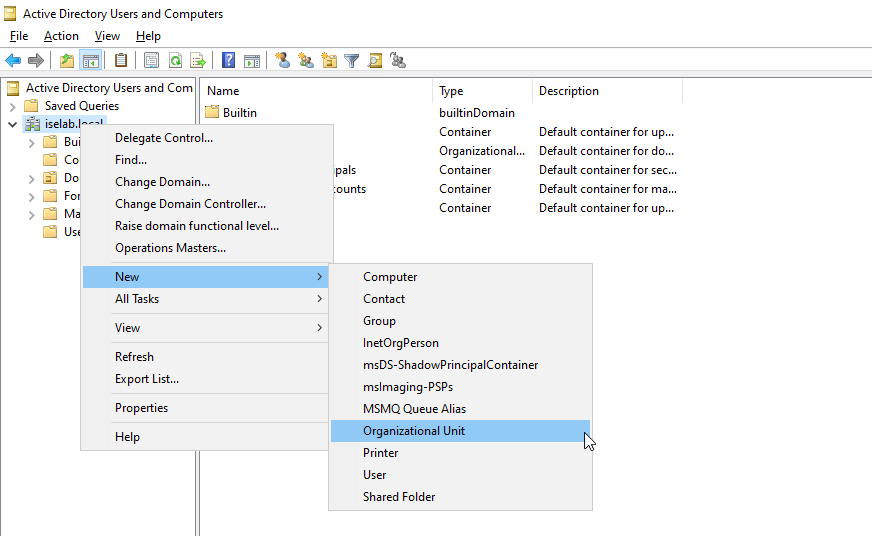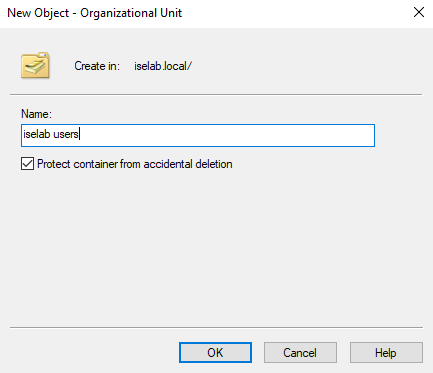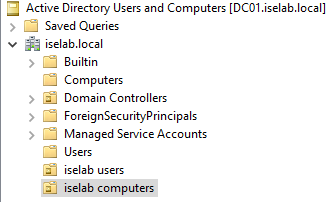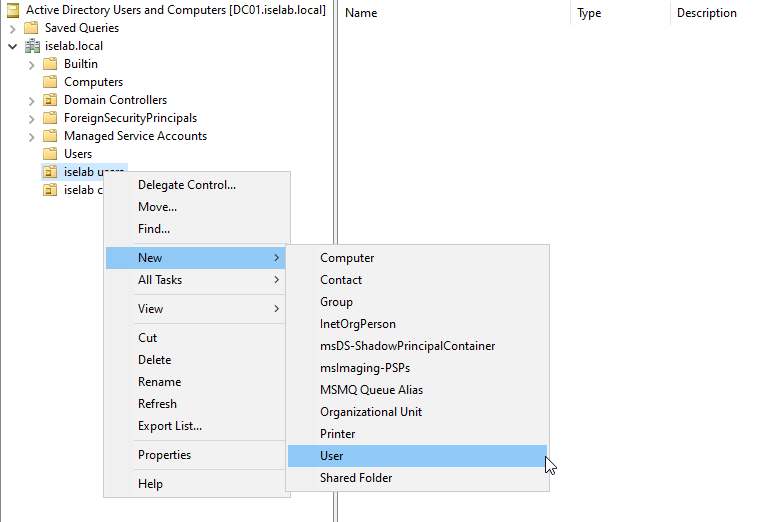Leveraging GPO to Distribute User- and Computer Certificate
The use of Group Policy Objects (GPO) can be really powerful in a Windows environment. In this post we’re going to leverage GPO to distribute certificates to the user and computer as well as enabling the 802.1X supplicant.
First, let’s see if there are any certificates on the Windows 10 VM in my lab:
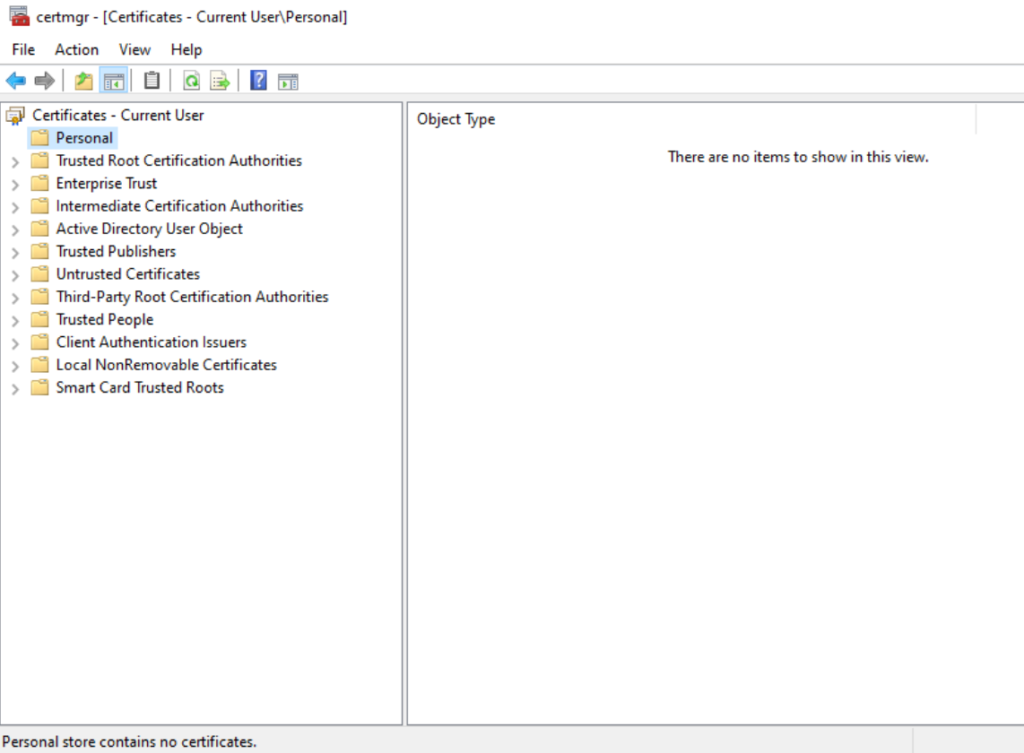
Currently, there are no certificates present on the VM. It has also not been joined to the domain.
First, open the GPO app:

There’s a default domain policy that can be used, but I’m going to create new policies, one for users, and one for computers. First, let’s create a policy for computers. I’m going to right click my computer OU, named iselab computers, and then select Create a GPO in this domain, and Link it here…:
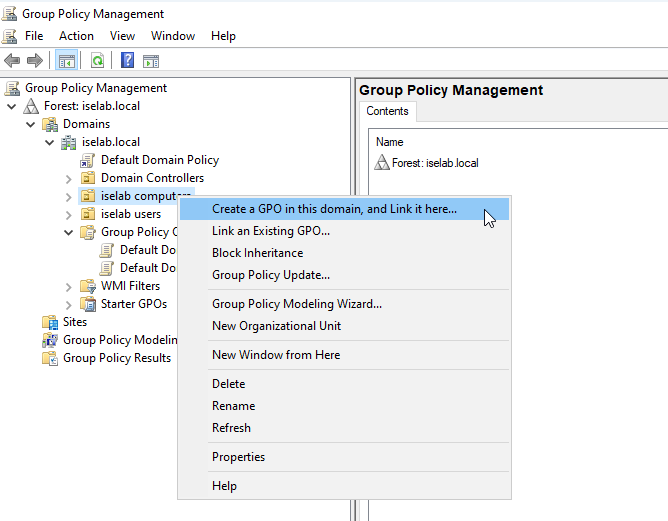
Give the GPO a name:
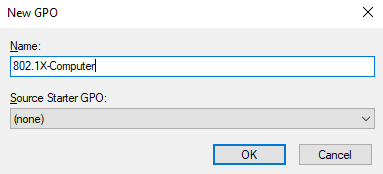
The GPO has been created:
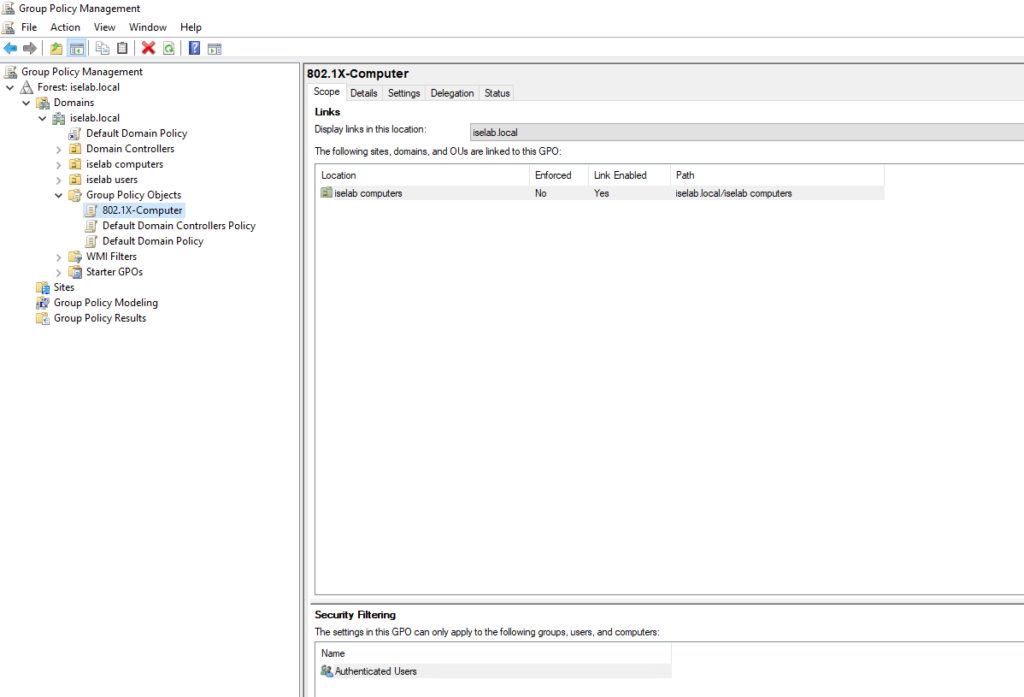
Right click the GPO and select Edit…:

The GPO Editor window opens:
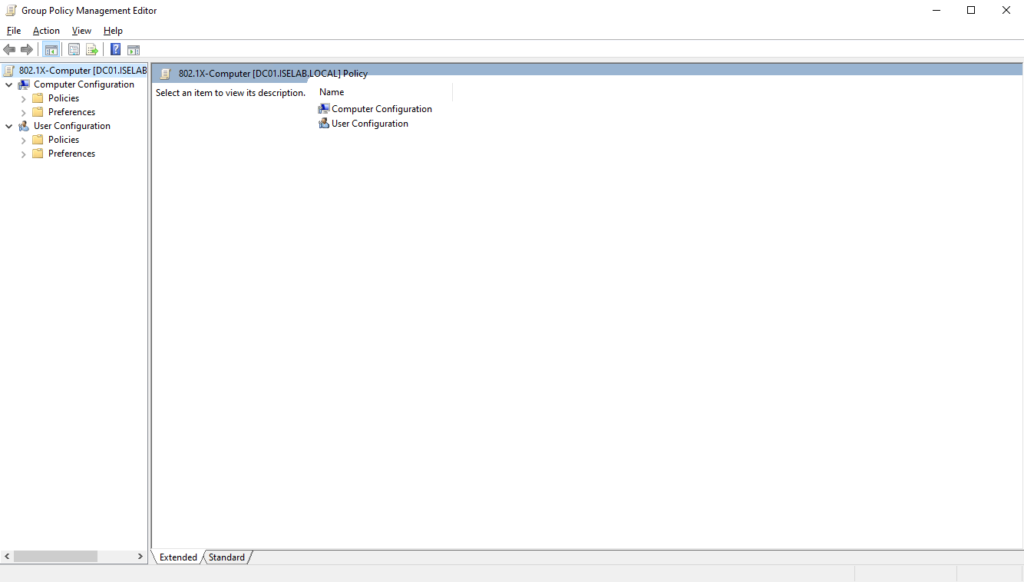
Then we’re going to navigate to Computer Configuration -> Policies -> Windows Settings -> Security Settings -> Public Key Policies and select Certificate Services Client – Auto Enrollment and then Properties:

A new window opens up:
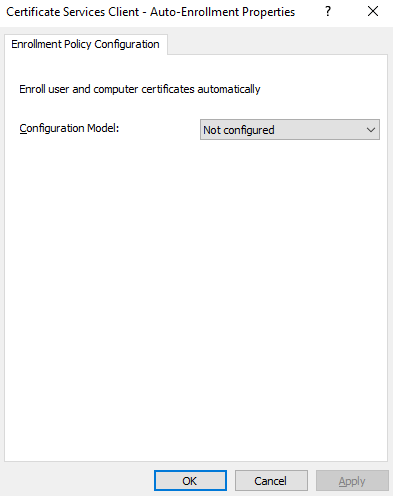
Change the Configuration Model to Enabled and Continue reading

